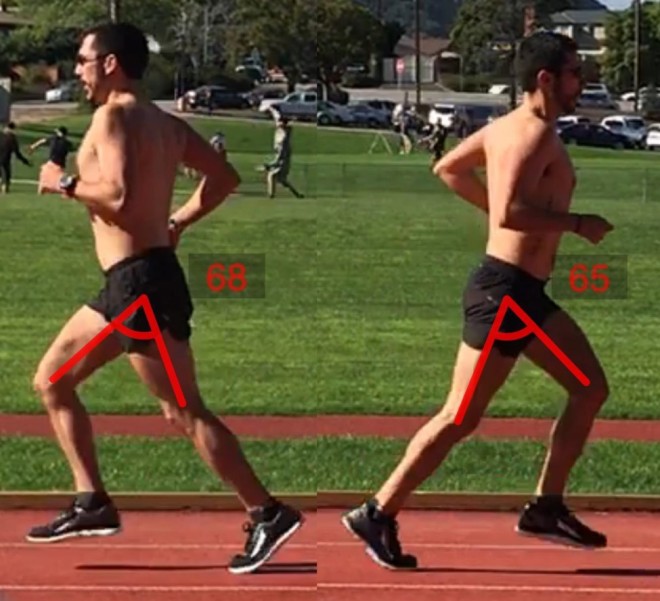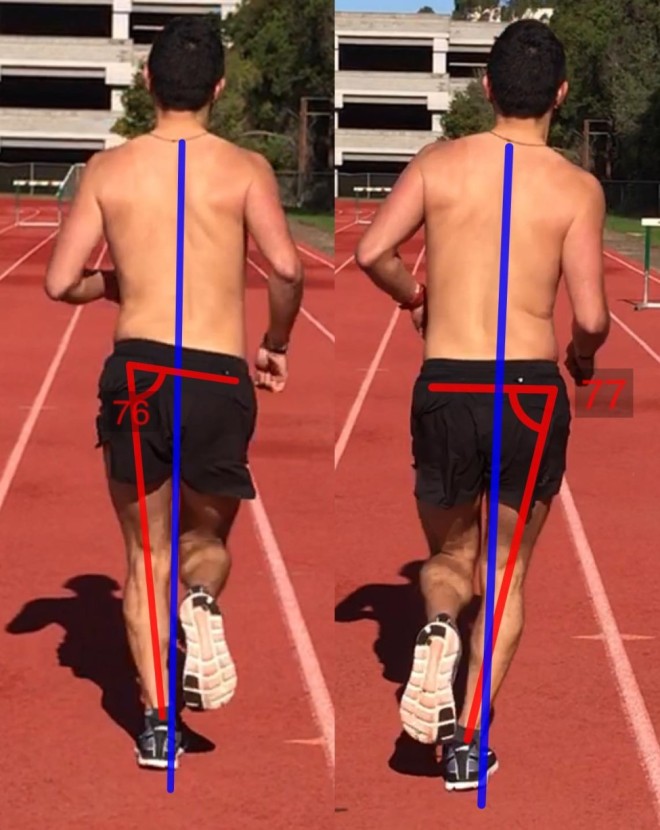Run tall… lean forward… lift your knees… let form drive speed…

It’s (I can hear my high school English teacher, Mr. Pierotti, reaming me for starting this post with a contraction) taken awhile to write this post, as I’ve wanted to provide enough time for an ample assessment of progress.
I’ve been learning how to run for the past seven months…
In February, I started working with Joe Uhan, a physical therapist and high performing ultra runner in his own right (top ten Western States finisher), to try and fix my ridiculously broken stride. Not coming from a structured running background, I didn’t have much to work with, but Joe reinforced my assumption of terrible form with an early assessment. If anyone reading this is interested in a formal gait analysis by Joe, along with recommendations to increase efficiency and form, take a look at this link (sorry, no ambassador discount or sales pitch, as my story is hopefully more than enough proof that this can work for anyone). http://uhanperformance.com/
To understand what we’re working with here, and it’s not pretty, take a look at these “before” pictures below:

The long-term goal of working with Joe, is to slowly… ever so F’ing slowly, increase the efficiency of my stride through strength work, drills and form reminders. For the past seven months, I’ve had this mantra drilled into my daily routine… “Let form drive speed.” This is a tough pill to swallow, as I’m slow as molasses before this stride fix, so slowing down even more to focus on form, is a gut punch when the girls JV team passes me during a track workout (granted, SLO high has an awesome caliber of women athletes, so I’m not too embarrassed here).
The first step in fixing my form has been admitting that I have a problem. Damn, this feels like the start of a 12-Step Program!
Creating several short videos to capture all angles of my lack of awesomeness, allowed Joe to analyze my stride and make recommendations on the good, the bad and the ugly (emphasis on the ugly). At least I saved Joe some time, as there wasn’t much good to report on. After analyzing the results, Joe provided a detailed breakdown of my inefficiencies and a plan to remedy my imbalances.
We started with a daily routine of exercises to strengthen muscle groups that would help drive proper form. Of all Joe’s recommendations, I thought this would be the easiest to tackle, as I’ve spent a significant amount of time in the gym (compared to most ultrarunners) doing a relative assortment of full body workouts.
Well, I learned pretty quickly that whatever the hell I was doing wasn’t obviously working. I was sore as shit for the first couple weeks of this routine! My lower abs and hip flexors were constantly on fire.
A proper warmup was also added to my repertoire, as I’ve habitually recycled a random assortment of drills into my morning pre-run ritual. Unfortunately, these drills focused on all the same damn muscle groups that were sore as hell from Joe’s strength training regiment. Needless to say, my first several weeks caused some serious doubt on if this new training plan was worth the effort.
Thankfully, Joe made it apparent early in the process that this would definitely suck for awhile… possibly a long while, before it got better. Well, “thankfully” probably isn’t the correct use of the word, as it would’ve been much easier to throw in the towel and go back to my normal stride/routine anytime during these past seven months.
Run tall… lean forward… lift your knees… let form drive speed…
Joe promised that over time, the standard niggles and pains that plague nearly all ultrarunners would subside, my heart rate would return to normal once it was used to the new stride, and I would eventually increase my efficiency and speed without an increase in effort.
Damn, this took awhile!
After Leona Divide I was a bit weary about the efficacy of this program, as I hadn’t put together a race to justify that this new focus was actually working. Thankfully, AC put all these fears to rest. Aside from a calf issue that we’ll figure out, my recovery post AC has been incredible. Granted, a honeymoon in Costa Rica definitely helps, but running with better form undoubtedly led to this lack of post race soreness and increased recovery.
So what the hell does this all mean, and why should I care???
Joe calls it the “fountain of youth” for running, as increasing the efficiency of one’s stride leads to less pain, better recovery and improved results. There are obviously a myriad issues that can plague ultrarunners, and improper form over hundreds of miles can create mountains out of mole hills.
“Train to be a better runner, not a better ultrarunner…”
Joe is likely going to charge me extra for posting all his secrets, but this one quote definitely hits home. The majority of the best ultrarunners on the planet were and are excellent runners on the track and/or roads (Magdalena Boulet, Max King, Xiao Wang, Jim Walmsley, Sage Canaday, Tim Tollefson, David Laney…).
Becoming a better runner will undoubtedly increase performance at the ultra distance. There’s a reason why Tim Twietmeyer and Ann Trason habitually raced marathons in the “off season,” as they knew that working on speed and efficiency would pay dividends at AR50 and Western States.
So, what does my training plan look like now versus before?
One of the many issues plaguing my previous training was that nearly all of my runs were medium-to-medium hard. Like most ultrarunners, I love running in the mountains, so that’s what I did. With effort levels in the moderate-to-hard range, I was unable to adequately recover for very hard efforts, or work at an intensity high enough to induce change. This led to moderate results, with relative lack of improvement.
The most significant change to my training plan now is that easy days are VERY EASY, and hard days are VERY F’ing HARD! I’ve been asked several times “how do you know if you’re easy days are easy enough?” The answer is actually quite simple… Am I able to adequately recover so that I can perform during hard workouts? If the answer is “no,” then my easy days are too hard. If the answer is “yes,” well then I’m probably doing something right. This is assuming that all other recovery variables are constant (sleep, nutrition, stress, etc.).
On our prep call for AC this year, I told Joe that I’ve never hiked this much in training before. On nearly every recovery run and most long runs, I would hike nearly all uphills with a significant grade. In past “training,” I’d run nearly everything in nearly every workout. Yes, my HR would spike on uphills, but it would return to normal on flats and descents. Unfortunately I didn’t realize that this approach was taxing my system too much on recovery days, to allow for an honest effort during workouts (hard days).
Keep your easy days EASY!
Aside from slowing the F down during easy days, workouts, or “hard days” are HARD. Whether it’s a hill repeat session up Stagecoach Road, a track workout at Cal Poly, a long run on West Cuesta with progressions or a “grind” run at a steady effort under tempo pace, each week has a variety of workouts that tax various systems. The effort level of these workouts is also something I wasn’t familiar with, as I’m fairly taxed after a heavy session. Joe’s ability to mix-and-match these workouts to induce change without working me into a hole is where his coaching ability really shines.
Hell, I can write a workout plan for just about anyone, but not implementing the right amount of variance, recovery and progression would likely lead to overtraining, or a lack of stimulus to create change.
So, is this new training plan working?
Based on my increased fitness, my ability to recovery, and lack of niggles and minor issues, I’m happier now as a runner than I’ve ever been. My plan is to continue with running until I croak, so I sure as hell hope that Joe’s theory of “fountain of youth” rings true.
What have I learned?
- Running is a wee bit more complicated than just throwing on shoes or huaraches and heading out the door
- To solicit change, easy days should be easy, and hard days should be hard
- Recovery is as important as the workout
- Form drives speed
- Trust the process
- I’m still slow as molasses…


Thanks for the very informative post. I know that I have more symmetry and core instability issues than I have the courage to assess. Congratulations on your recent wedding and honeymoon!
LikeLiked by 1 person
Nice post Jadd. BTW, your “slow” would be unreachable for my fast. You are an awesome runner even when you were running “wrong”. Also I am curious what your therapist thinks about Chi Running, which perhaps incorporates some similar concepts.
LikeLiked by 1 person
I’ll check with Joe on his thoughts surrounding Chi running Jon, and will get back to you.
LikeLiked by 1 person